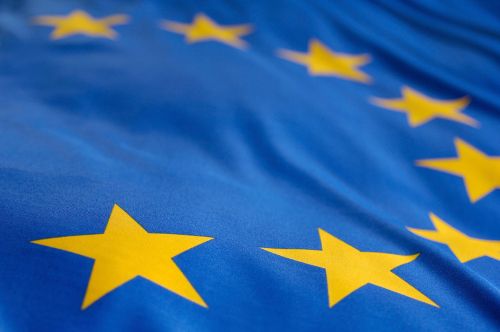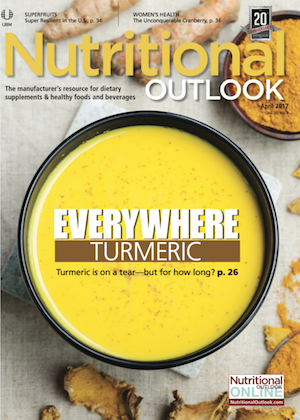The EU Novel Food System Aims to Become Faster-and Better
How the European Union’s new novel food regulation aims to quicken time to market and boost innovation.
Photo © iStockphoto.com/richterfoto

How the European Union’s new novel food regulation aims to quicken time to market and boost innovation.
ByThomasPauquai, PhD, Nutraveris
After 20 years, the European Union’s novel food regulation is finally getting an update. On December 11, 2015, the European Parliament published in the OfficialJournaloftheEuropeanUnion regulation (EC) 2015/2283. The regulation, which becomes effective January 1, 2018, replaces the Parliament’s previously existing novel food regulation, (EC) No 258/97, which was signed into law in January 1997.
The aim of the new regulation is to create a simpler, clearer, and more efficient authorization procedure for novel food ingredients, fully centralized at EU level. By streamlining the process, the regulation should enable safe and innovative novel foods to enter the EU market faster, without compromising a high level of public health.
NovelFoodRevisionandDefinitions
The general definition of a novel food remains unchanged in this new law-namely, that a novel food is considered an ingredient not used for human consumption to a significant degree within the European Union before May 15, 1997, the date the original novel food regulation, (EC) No 258/97, went into force.
The scope of this regulation should, in principle, remain the same as the scope of regulation (EC) No 258/97. However, given the scientific and technological advancements that have occurred since 1997, the regulation does review, clarify, and update the categories of food which constitute novel foods. As of now, those categories include:
- Whole insects and their parts
- Food with a new or intentionally modified molecular structure, as well as food from cell culture or tissue culture derived from animals, plants, microorganisms, fungi, or algae
- Food from microorganisms, fungi, or algae
- Food from material of mineral origin
Novel foods also include food from plants obtained by non-traditional propagating practices where those practices give rise to significant changes in the composition or structure of the food, affecting its nutritional value, metabolism, or level of undesirable substances. The definition of novel food may also cover food consisting of certain micelles or liposomes.
As for emerging technologies in food production, the regulation further specifies that a food should be considered a novel food when it results from a production process not used for food production within the European Union before May 15,1997, if that process results in significant changes in the composition or structure of a food, affecting its nutritional value, metabolism, or level of undesirable substances. Foods consisting of engineered nanomaterials are also considered novel foods under this regulation.
Examples of novel foods include agriculture products from non-EU countries (e.g., chia seeds), newly produced nutrients (e.g., synthetic zeaxanthin), or extracts from existing food (rapeseed protein). The novel food regulation still excludes genetically modified food (Regulation (EC) No 1829/2003), food enzymes (Regulation (EC) No 1332/2008), food used solely as additives (Regulation (EC) No 1333/2008), food flavorings (Regulation (EC) No 1334/2008), and extraction solvents (Directive 2009/32/EC).
Novel foods should not be placed on the market or used in food for human consumption unless they are included in a European Union list of novel foods authorized to be placed on the market within the Union. It makes sense if this European Union list included novel foods already authorized or notified in accordance with Regulation (EC) No 258/97, including any existing authorization conditions.
The procedure for submitting a novel food application remains the same. A novel food application must prove the safety of the novel food/ingredient and will be submitted to authorities for evaluation. The goal of the application is to characterize the ingredient and prove its safety through toxicological data. In a recent guidance, the European Food Safety Authority (EFSA) specified that minimum requirements which should be covered in all applications relate to the description of the novel food, production process, compositional data, specification, proposed uses and use levels, and anticipated intake of the novel food. Further information includes the history of use of the novel food and/or its source, absorption, distribution, metabolism, excretion, nutritional information, toxicological information, and allergenicity.
Of note, EFSA now expects data on toxicokinetics (absorption, distribution, metabolism, and excretion-ADME) that are important in the assessment of both the nutritional and toxicological impact of a novel food. One potential problem is that toxicokinetic/ADME studies are often adapted to drug molecules, but not to natural ingredients like botanicals. It also raises the question of how regulators will assess ADME for complex ingredients (such as a mix of plants). It’s also unclear how a firm might perform an ADME study for an ingredient like a probiotic.
PhasingOutSubstantialEquivalence
It’s important to note that the new regulation will phase out a component of the original novel food regulation that had provided a simplified procedure for manufacturers to introduce novel food ingredients to market in the EU. Known as the “substantial equivalence” procedure, the rule said that if a company’s ingredient was deemed by a scientific committee to be similar to another ingredient already authorized as a novel food, that company could file a notification with the European Commission notifying the commission that it intends to market the ingredient. “[F]oods or food ingredients which, on the basis of the scientific evidence available and generally recognized or on the basis of an opinion delivered by one of the competent bodies, are substantially equivalent to existing foods or food ingredients as regards their composition, nutritional value, metabolism, intended use, and the level of undesirable substances contained therein” were able to take advantage of this substantial equivalence rule.
This simple, cheap, and quick procedure will disappear on January 1, 2018, when the new regulation kicks in. It can seem pretty useless to require firms to apply for a “substantial equivalence” concerning, say, chia seed oil when more than 50 notifications have already been accepted for similar ingredients.
TraditionalFoodsfromNon-EUCountries
At the same time that the new regulation phases out the very useful substantial equivalence rule, the new regulation also introduces a notification procedure that streamlines the process for traditional foods from non-EU countries.
The new rule says that if a food has been safely consumed in at least one non-EU country for at least 25 years as a part of the customary diet of a significant number of people, a company should provide information on the description, production process, compositional data, specifications, experience of use, and proposed conditions of use of the traditional food for the EU market. In a recent guidance, EFSA specified that references could include scientific publications, scientific expert opinions, monographs, information from international or national organizations, governmental documentation, and figures on cultivation/harvesting, sales, and trade. Further information might be obtained from cookbooks, recipes, and anecdotal data. One might also ask the question of how EFSA will weight the importance of such data to conclude whether a food is safe or not. Only time will tell.
MoreEfficiency, MoreInnovation
This new novel food authorization procedures are intended to be simpler, quicker, and centralized at European Commission (EC) level. Above all, it aims to shorten the waiting time companies currently endure before ingredients are approved-“to reduce the current length (three-and-a-half years on average) under the current regulation, the EC says.1
According to the EC, “The new Regulation increases the efficiency of the authorization procedure, enables a quicker delivery of safe, innovative food to market, and removes unnecessary barriers to trade, whilst ensuring a high level of food safety.”
If and when the European Commission requests an opinion from EFSA, it shall forward the valid application to the EFSA without delay, and not later than one month after having verified its validity. EFSA shall adopt its opinion within nine months from the date of receipt of a valid application. In assessing the safety of novel foods, EFSA shall, where appropriate, consider whether: 1) the novel food concerned is as safe as food from a comparable food category already placed on the market within the European Union; 2) the composition of the novel food and the conditions of its use do not pose a safety risk to human health in the Union; 3) a novel food, which is intended to replace another food, does not differ from that food in such a way that its normal consumption would be nutritionally disadvantageous for the consumer.
EFSA shall forward its opinion to the Commission, to the Member States, and, where applicable, to the applicant. Within seven months from the date of publication of EFSA's opinion, the European Commission should submit to the committee a draft implementing act authorizing placing the ingredient on the market on the updated union list of novel food.
According to the European Commission, “The new novel food regulation…aims to improve conditions so that businesses can more easily bring new and innovative food to the EU market, while still maintaining a high level of food safety for European consumers. It will offer European consumers the benefit of a broader choice of food and a more favorable environment for Europe’s agri-food industry-the second largest employment sector in Europe-to benefit from innovation, which in turn is good for growth and jobs.”
Thomas Pauquai has a PhD in Physiology & Physiopathology. As head of the Health Claims & Food Safety Department at regulatory consultant Nutraveris (Ploufragan, France), he and his team prepare and submit successful health claim and Novel Food dossiers, formulate innovative health products, submit patents, and write scientific argumentation records justifying the efficacy and safety health nutrition products.
References:
1.https://www.neweurope.eu/wires/questions-and-answers-new-regulation-on-novel-food/

Magnesium L-threonate, Magtein, earns novel food authorization in the European Union
December 19th 2024According to the announcement, the authorization is also exclusive to AIDP and its partner company and licensee, ThreoTech, meaning that they are the only parties that can market magnesium L-threonate in the EU for a period of five years.
Senate Committee has released the text of 2024 Farm Bill, with changes to hemp regulations
November 19th 2024The U.S. Senate Committee on Agriculture, Nutrition, & Forestry has introduced the Rural Prosperity and Food Security Act, which will serve as the Senate’s draft for the 2024 Farm Bill.